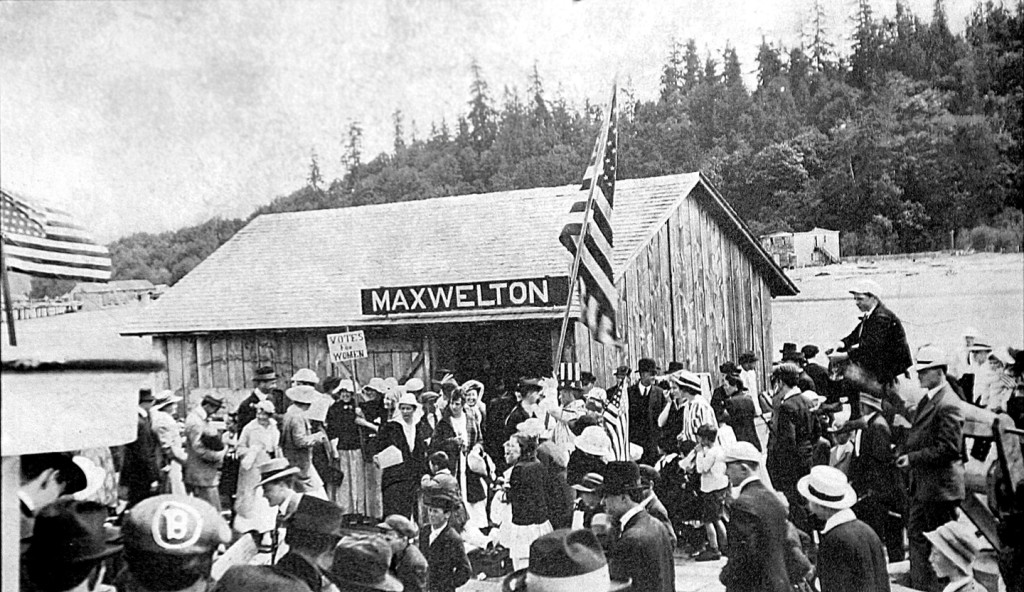Maxwelton
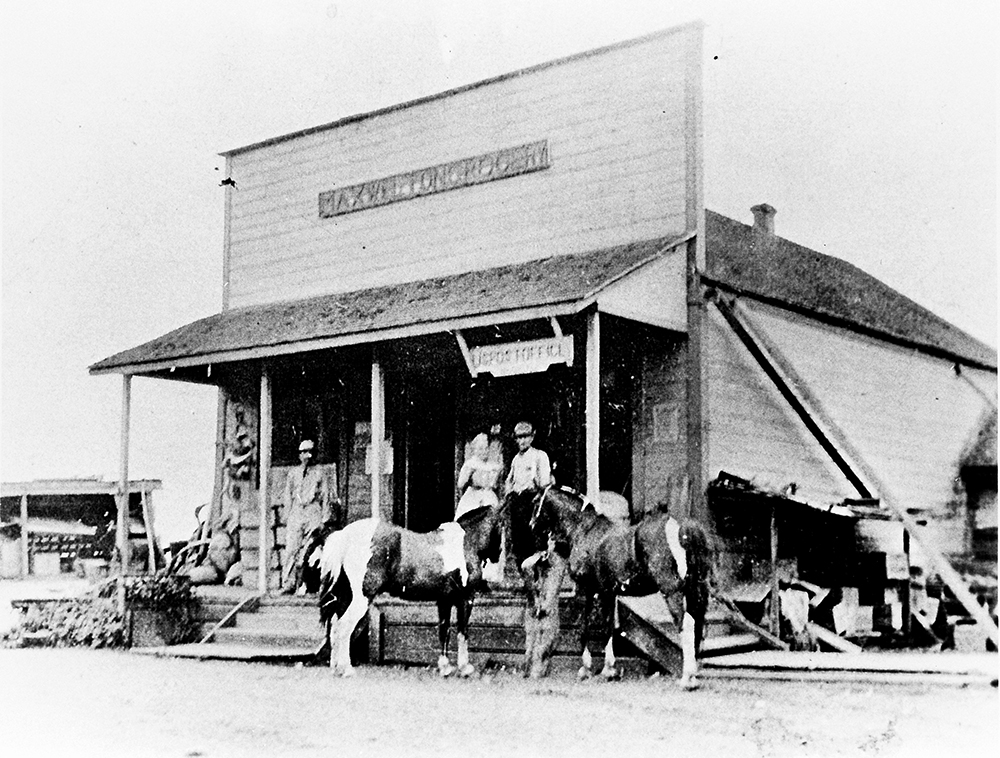
This false-front Maxwelton Grocery and post office was located at the entrance to the Maxwelton dock which the Mackie brothers built in 1908.
The store was built and operated by James Edgar Montgomery and his wife, Sara. They moved to Maxwelton in 1905.
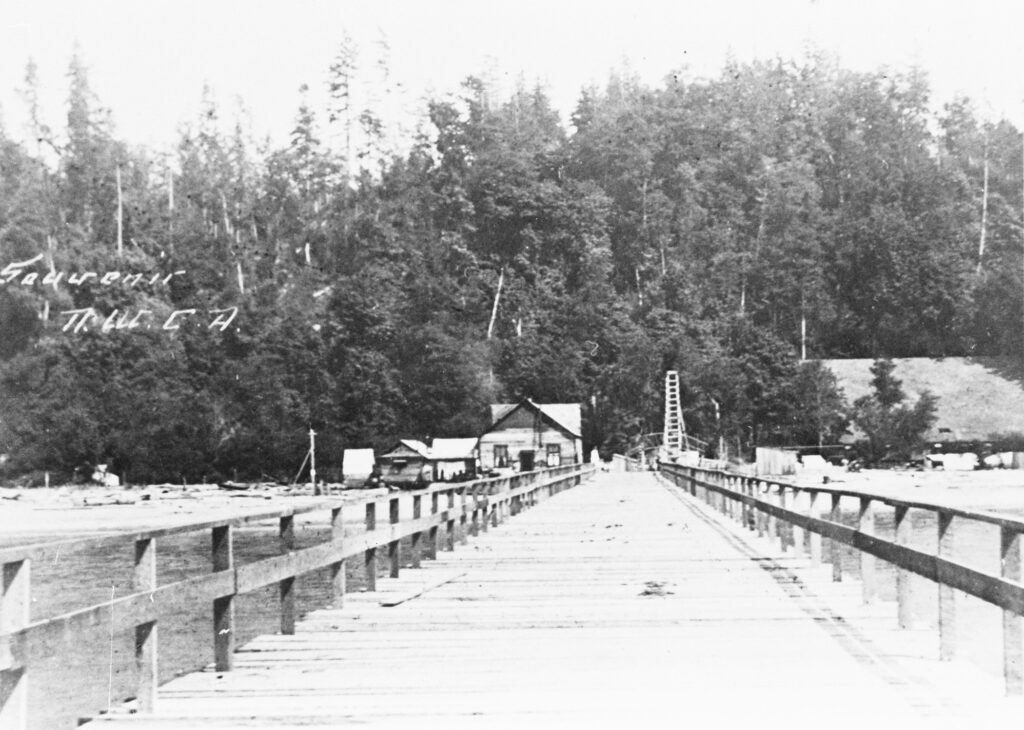
Note the not-yet-covered amphitheater for the Chautauqua at right. Estimates put the seating capacity at about 4,000, which was huge, considering there were only 12 families living in the Maxwelton area at the time.
The passenger steamer Columbia provided service to Maxwelton from Seattle and Everett for about 35 cents.
A Brief History of the area written by Cora Cook in 1951…
The place to be in 1910
Chautauqua was the place to be in 1910 if you wanted the best in religion, education, entertainment, and recreation. Our Whidbey Island community of Maxwelton hosted the first Chautauqua on Puget Sound. It ran from July 19 through July 31 and can best be described as summer camp for adults.
The first Chautauqua was held on Lake Chautauqua, New York in 1874. The movement spread quickly throughout the United States. In 1910, a group of about 20 pioneering families thought it would be a great way to get all those city folks up to Whidbey Island to enjoy their little community and maybe purchase some of it before they left. Maxwelton pioneers, including the Mackie brothers and J.J. Burley, had a dream of turning Southwest Whidbey into a city the size of Seattle or at least Everett.
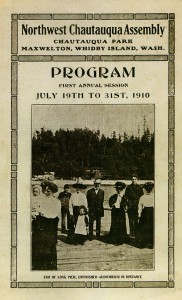 One day in the early spring of 1910, a group of well-dressed business men and women stepped off the steamboat onto Maxwelton’s new dock. They were looking for a special venue for the grandest Chautauqua the state had ever seen. A deal was quickly made, and the game was on! Plans were drawn, wood was cut, construction was started and a magnificent covered 2,500 + seat auditorium was soon completed. Fences were installed and canvas tents sprang up everywhere. The well-dressed sponsors had $3,000 to spend on the best entertainment the region could offer. Advertising went out, supplies obtained and the madness of the venture kicked into high gear. Special steam train routes from outlying states were arranged, with guest speakers and entertainers from as far away as Missouri booked.
One day in the early spring of 1910, a group of well-dressed business men and women stepped off the steamboat onto Maxwelton’s new dock. They were looking for a special venue for the grandest Chautauqua the state had ever seen. A deal was quickly made, and the game was on! Plans were drawn, wood was cut, construction was started and a magnificent covered 2,500 + seat auditorium was soon completed. Fences were installed and canvas tents sprang up everywhere. The well-dressed sponsors had $3,000 to spend on the best entertainment the region could offer. Advertising went out, supplies obtained and the madness of the venture kicked into high gear. Special steam train routes from outlying states were arranged, with guest speakers and entertainers from as far away as Missouri booked.
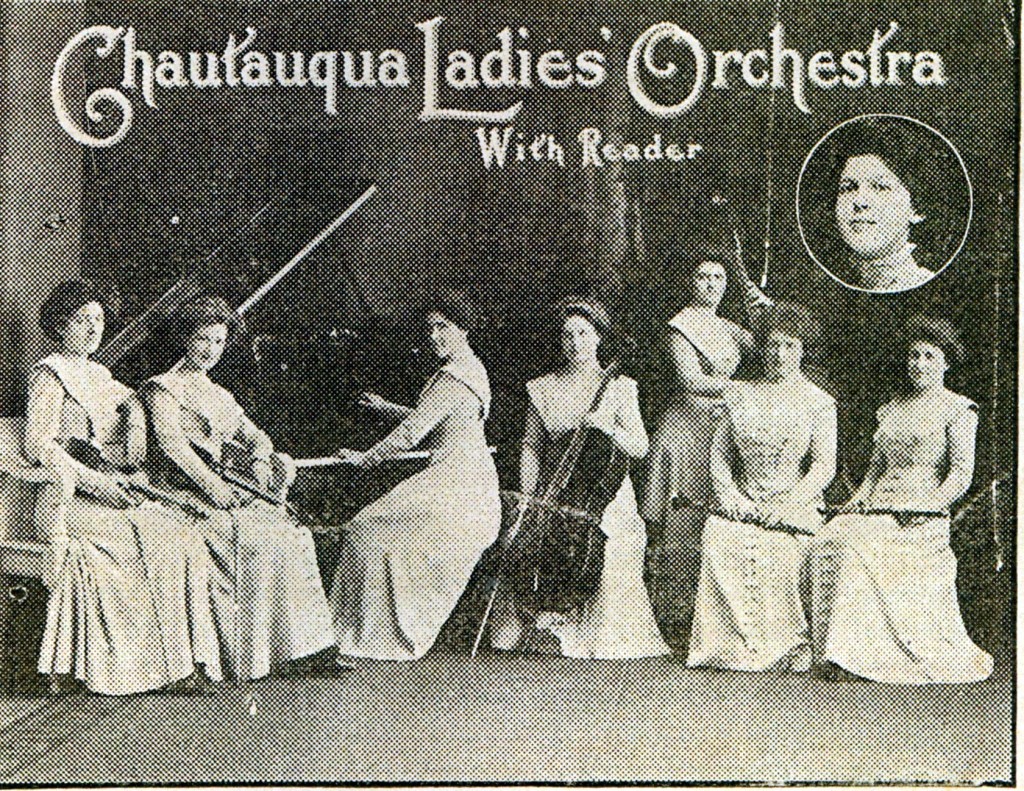
The first group to sign on was the Ladies Chautauqua Orchestra for an entire week. Programs for children were arranged so it became a family event. Visitors were invited for two weeks of the happiest days of their lives. They could rent a tent and enjoy the real pleasures of camp life. When they went back to civilization, they would have a fresh sparkle in their eye and a renewed vision in their soul.
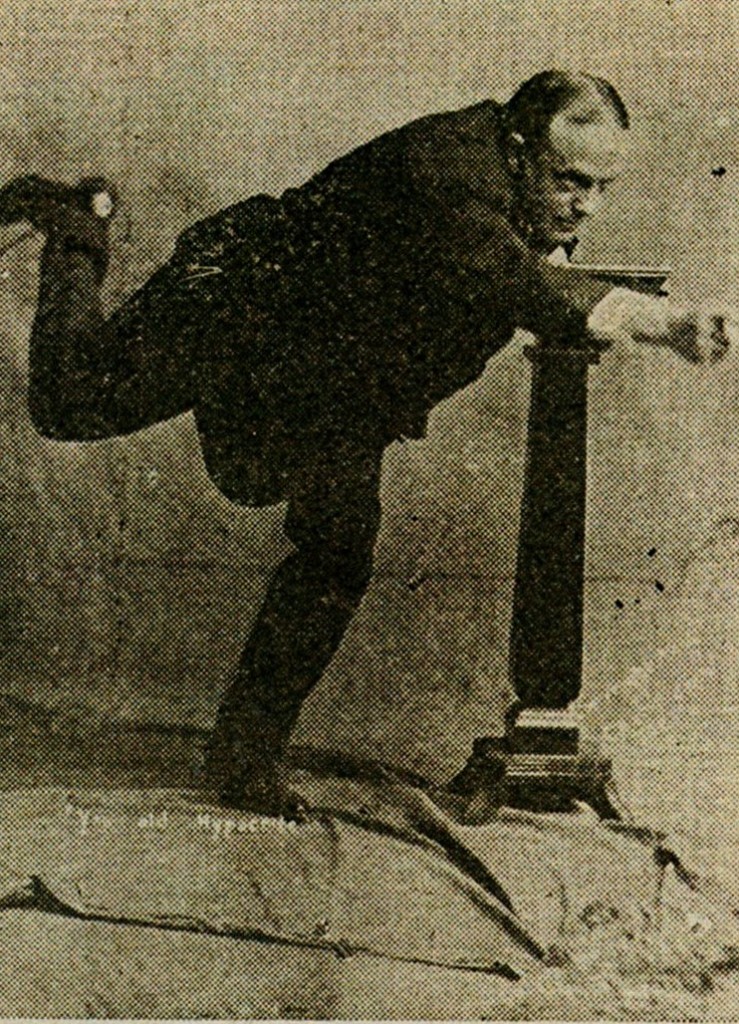 Among the speakers and entertainers were such well-known persons as Billy Sunday, the sensational evangelist; Elias and Oranne Truitt Day, dramatic entertainers; Mrs. Ida M. Snyder, exponent of physical culture; Ross Crane, cartoonist and musician; Mrs. Frances King Headlee, lecturer; Willis R. Hotchkiss, African missionary, and Dr. Sam Small, the famous Southern evangelist. Another huge draw was Zintkala Nuni (Lost Bird), the educated Indian girl who was picked up when three months old after the battle of Wounded Knee. She lectured on Indian lore and also gave exhibitions of expert horsemanship upon the beach. Mrs. Harriet C. Saunderson, former director at Smith College, was in charge of the physical culture and expression classes.
Among the speakers and entertainers were such well-known persons as Billy Sunday, the sensational evangelist; Elias and Oranne Truitt Day, dramatic entertainers; Mrs. Ida M. Snyder, exponent of physical culture; Ross Crane, cartoonist and musician; Mrs. Frances King Headlee, lecturer; Willis R. Hotchkiss, African missionary, and Dr. Sam Small, the famous Southern evangelist. Another huge draw was Zintkala Nuni (Lost Bird), the educated Indian girl who was picked up when three months old after the battle of Wounded Knee. She lectured on Indian lore and also gave exhibitions of expert horsemanship upon the beach. Mrs. Harriet C. Saunderson, former director at Smith College, was in charge of the physical culture and expression classes.
The assembly was opened formally by Governor Marion E. Hay, who delivered the address of welcome on July 19. Epworth League Day, celebrating the Methodist Episcopal faith, followed with Julius C. Zeller and Dr. Landon, district superintendent of the M.E. Church at Bellingham, providing the lectures. The Chautauqua Ladies Orchestra gave a concert in the evening. July 21 was selected as Women Suffrage Day. The King County Political Equality League would picnic at Maxwelton on that day. Mrs. Clara Bewick Colby of Portland spoke, and all suffragists were invited.
July 22 witnessed a gold medal oratorical contest for WCTU (Woman’s Christian Temperance Union) Day, with Mrs. Lulu L. Shepherd of Salt Lake City, President of the Utah WCTU, delivering the address. Ex-Gov. Joseph W. Folk of Missouri and representatives of organized labor spoke on Labor Day, July 23. July 25 was Conservation Day, and the Washington Conservation Association was in charge of the exercises. Fried chicken and the Farmers’ Grange were the attraction on Grange Day, July 26, along with speaker S.A. Kegley, grand master of the Washington State Grange. G.A.R. Day was celebrated on July 27 with an address by Albert Thompson of Nebraska, and original poetry by R.K. Beacham, the Chinook poet of Everett.
Recognition Day, Children’s Day and Educational Day all followed in succession. Among the speakers were Judge Frank P. Sadler, of Chicago, and Prof. E.T. Mathes, Principal of the Bellingham Normal School.
Children were under the care of supervisors while the parents attended lectures. Children’s activities included story hours, physical cultural, nature study, games and tramps about the island. During the last week on Children’s Day, they gave a program for their parents under the direction of the supervisors.
With the advent of the 1910 Chautauqua event, many people came to Maxwelton with over 600 arriving on the first day. Some days had over 2,000 attendees all enjoying whatever Maxwelton had to offer. Some people decided to stay, property lots were purchased as planned, and the summer resort community of Maxwelton slowly started to grow.
During the spring of 1911, the small community of Maxwelton began formulating plans for another great Chautauqua summer. The bad news came on April 17 of that year when the Northwest Chautauqua Assembly, sponsors of the Chautauqua, announced they were moving to a more accessible venue on Bainbridge Island at Manitou Park.
The pioneering families of Maxwelton rallied and came up with new ideas. They changed the name of the event to Puget Sound Chautauqua Assembly and proposed grand ideas such as automobile races and prize fights. But this was to no avail. The reality of the situation soon became clear when many of the surrounding communities and cities realized that they could have their own Chauatauqua events. From Colville to Tacoma, Chautauqua became a yearly event for many locales. No longer was there a need to travel all the way to South Whidbey for summer entertainment.
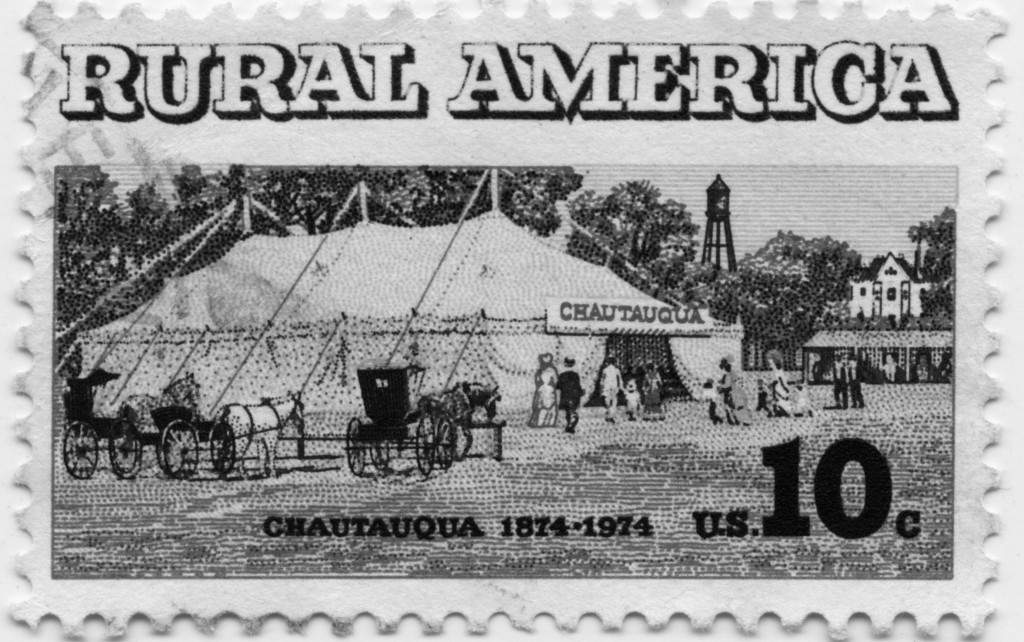
The Maxwelton Chautauquas ended when the ‘Big Snow of 1916’ collapsed the roof over the amphitheater.
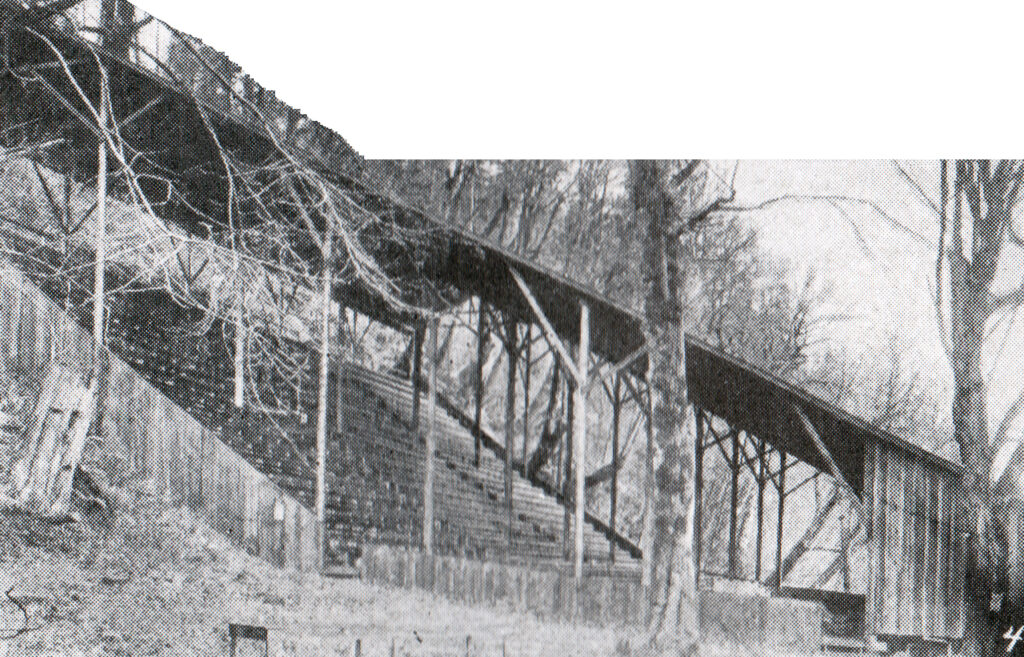
Life in the 1920s and 1930s
If you want to know what life was like on South Whidbey in the 1920s and ’30s, then watch this excerpt of an interview that Bill Steiner did in 1981 of his neighbors, Leon and Marie Burley, of Maxwelton.
Leon’s parents moved from Nebraska to the Ravenna neighborhood in north Seattle via a buckboard wagon in 1902. Leon and Marie met in 1915 while playing together in her father’s orchestra (music was a shared passion) and married in 1916.
The Burley family had spent many summers on South Whidbey with their friends, the Mackies, who moved here in 1905. The Burleys moved to Maxwelton in 1921. In addition to farming, Leon drove the school bus to Langley and Marie taught piano lessons for 50 years.
Leon was 90 when this interview was done, and Marie was 86. He died in 1996 at the age of 104, three years after Marie had passed away at age 97.
The Burleys’ recounting of South Whidbey farm life, family, work, values and community is priceless.
https://www.facebook.com/SouthWhidbeyHistory/videos/1043771362443743/
Julia Mackie Brixner and the Cross Country Store
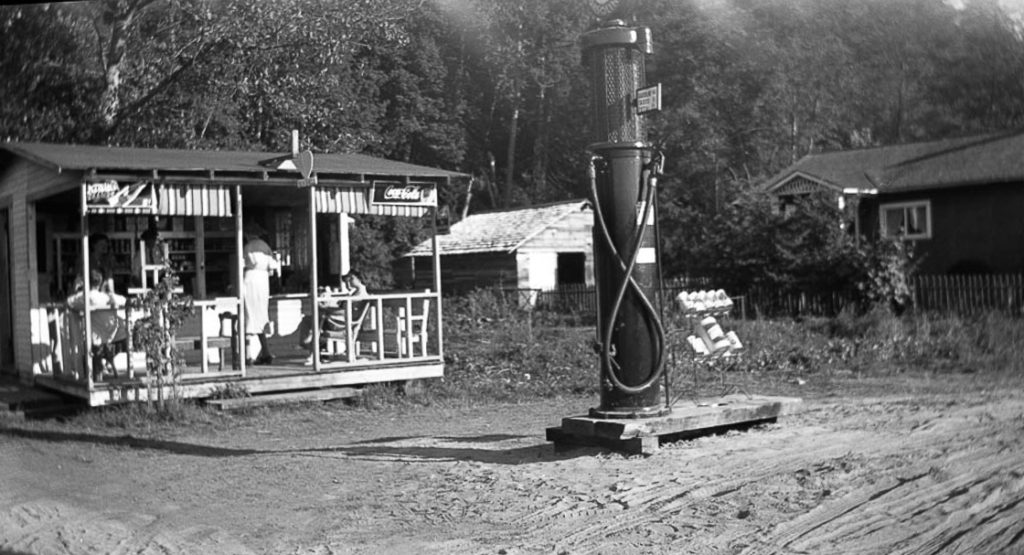
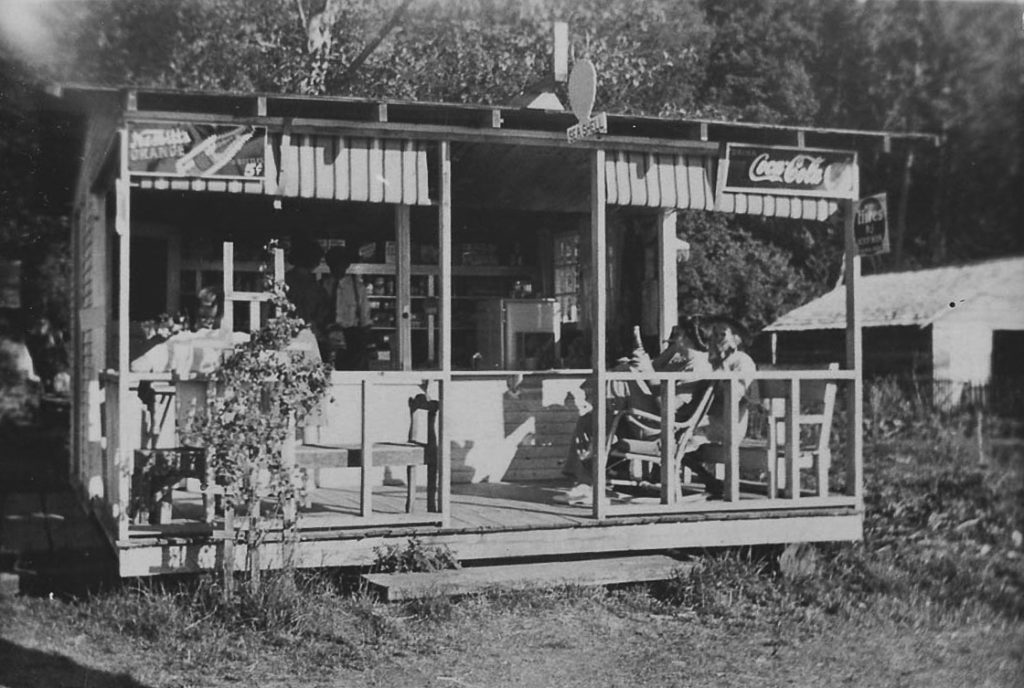
Called the Green Gate or Sea Shell
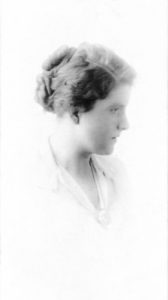 In 1917 Julia Mackie married Myron Bixner (a logger at Maxwelton) and started a family. Unfortunately, her husband died in 1929 and as a widow with three young children, she was faced with finding a way to support them.
In 1917 Julia Mackie married Myron Bixner (a logger at Maxwelton) and started a family. Unfortunately, her husband died in 1929 and as a widow with three young children, she was faced with finding a way to support them.
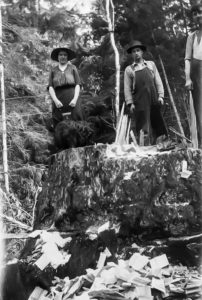
Probably at Myron Brixner’s logging camp
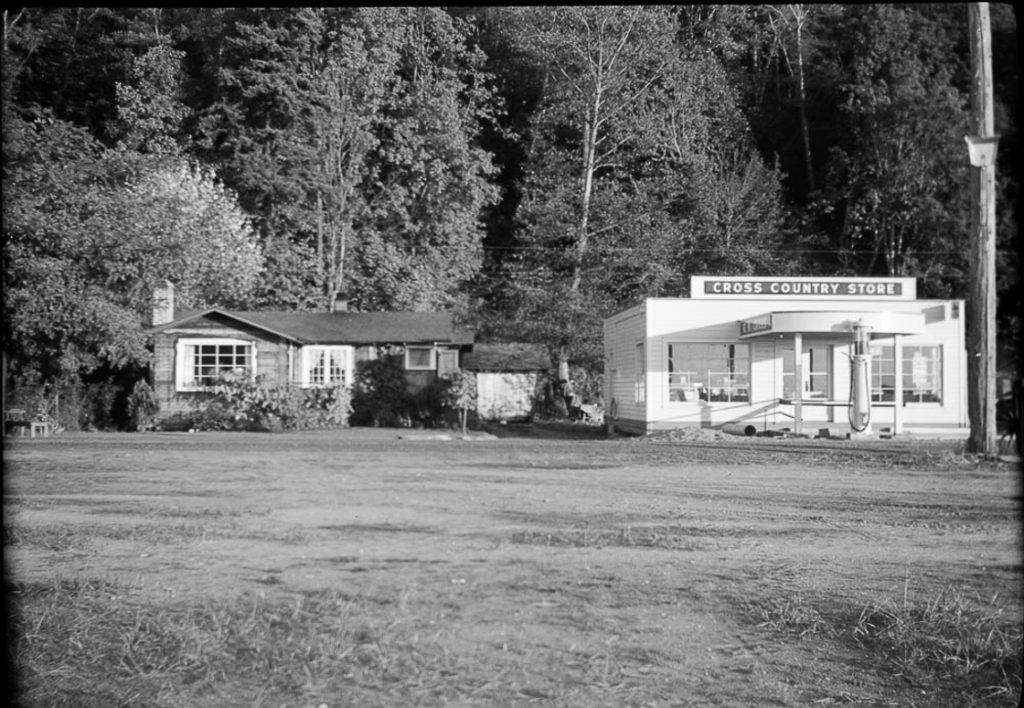
Circa late 40’s

